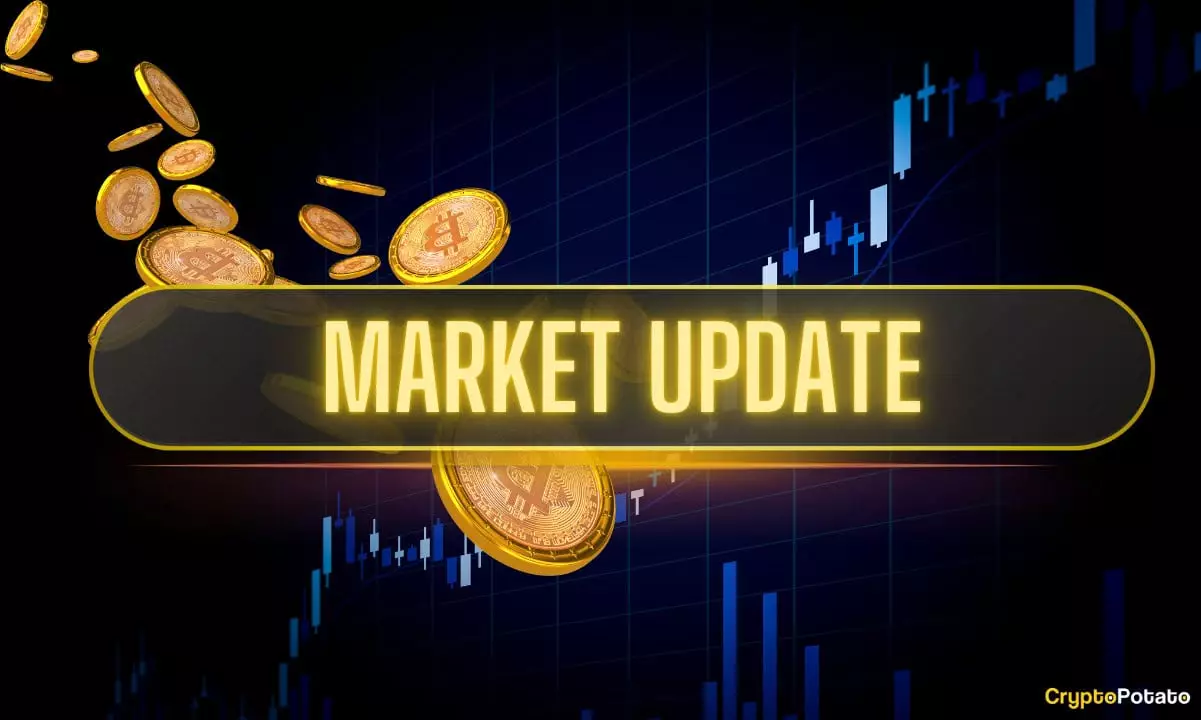Last week was a rollercoaster for many in the financial markets, particularly for the cryptocurrency sector, which displayed remarkable resilience in the face of geopolitical turmoil. The week kicked off with a surprising missile strike by Israel on Iranian soil, resulting in substantial casualties, including notable military and scientific figures. This escalated tension inevitably sent ripples through the crypto market, prompting a sharp decline in Bitcoin’s value, dropping from an impressive $108,000 to a mere $103,000 in a matter of moments. However, unlike traditional markets—a sector often quick to panic in response to political instability—Bitcoin rebounded swiftly, illustrating its growing maturity and acceptance as a dependable asset.
What is striking about Bitcoin’s recovery is not merely its ability to weather the storm of immediate market reactions, but also how it maintained a footing in the price range of $104,000-$105,000 as the week unfolded. This speaks volumes about its evolving role in a portfolio, as investors increasingly pivot towards crypto as a hedge against traditional market volatility. The predictable pattern of inversely correlating geopolitical tensions with crypto valuation might even signify a paradigm shift in how investors perceive risk.
Institutional Influence Over Market Movements
The market dynamics have shifted; Bitcoin is no longer exclusively the playground of retail investors. Data indicates that over recent months, the price stabilization of Bitcoin around the $100,000 mark is largely being driven by interest from institutional entities rather than retail enthusiasm—a significant deviation from patterns noted during previous bull runs. The lack of smaller transactions suggests a landscape where major players dominate the market, which could be a double-edged sword. On one hand, the institutional influx lends legitimacy and stability; on the other, it raises questions about the availability of Bitcoin for everyday investors as the supply shrinks.
Intriguingly, reports show a dwindling amount of Bitcoin available for circulation, with an astounding average of 566 BTC being transferred to long-term investors each day, while the daily issuance rate is pegged at 450. This imbalance paints a concerning future regarding Bitcoin’s availability, potentially pushing prices even higher as demand outstrips supply. It’s feasible to envision a scenario where Bitcoin becomes the ultimate safe haven as it consolidates its status among investor portfolios—a thought that could ignite further institutional interest, albeit at the expense of average retail holders.
The Regulatory Landscape is Shifting
In addition to the supply-demand conversations, regulatory developments loom on the horizon, influencing market sentiments. The passing of the GENIUS Act in the Senate marks a pivotal moment for cryptocurrency regulation in the U.S. The overwhelming approval indicates a growing acceptance by lawmakers of stablecoins and blockchain technologies. Such clarity may draw more institutional attention to cryptocurrencies and stabilize the market further by providing explicit benchmarks for engagement.
This change, however, is a double-edged sword. While regulations might offer protections and lay the groundwork for mainstream adoption, they also carry the risk of restricting the spontaneous innovations that originally spurred the rise of decentralized finance. It raises the question of whether we are setting up for a future where Bitcoin serves conventional financial frameworks rather than the anarchic freedom it was originally intended to uphold.
The Role of Bitcoin in a Portfolio
Amidst these changes, Bitcoin’s portfolio relevance cannot be understated. While it remains a volatile asset, its price movements indicate an increasing correlation with market stability rather than chaos. If investors perceive Bitcoin not just as a speculative asset but also as a safeguard against geopolitical instability and inflation, we may be laying the groundwork for a paradigm where cryptocurrencies play a vital role in global financial systems.
Moreover, impressive performances from altcoins such as WBT, which surged up to 45% within the same week, might hint at an expanding public interest and confidence in the cryptocurrency sector as a whole. Yet, this trend is overshadowed by underperforming coins, indicating a need for cautious optimism in diversified investments.
The Steady Path Forward
While Bitcoin has shown significant resilience, notably recovering from geopolitical shocks and navigating institutional demand, the road ahead remains fraught with uncertainties. The landscape is dramatically shifting, driven by a mix of regulatory clarity and shifting demand dynamics. Observers must remain vigilant and critically analyze both external factors and internal market behaviors to grasp the evolving role of Bitcoin as an investment. Bitcoin is not just a cryptocurrency; it holds the potential to redefine financial paradigms, yet its path to mainstream acceptance is a delicate dance against traditional financial conventions and emerging regulatory frameworks.

